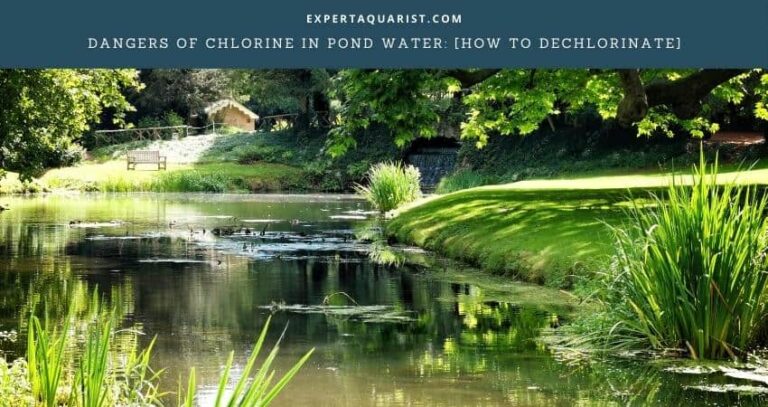Ponds and ducks are almost synonymous. When you imagine a duck, it’s impossible not to see a pond in the background. As a matter of fact, duck rearing is a massively popular interest amongst pond owners. And more and more people are learning how to build a duck pond to take up this hobby.
For building a duck pond you need to excavate a wide area in a location with a stable climate. Additionally, you need biofilters too. And to keep the pond oxygenated, you must install one aerator.
But it’s not as easy as it looks. So, I’ll share a rich guide with you so you can comfortably start out. Scroll down a bit please for some valuable information.
How To Build a duck pond: a step by step journey

Ducks definitely increase the charm of your pond by manifold. If you want them to visit your landscaping, making a dedicated place for them is a good idea. And making one is not hard at all. Have a look at these simple steps:
1. Planning
Please listen to what I have to say before you roll your eyes! I know what you’ll say, “everything needs planning; it’s not even a bonafide step”. But trust me, having this is significant. Because you need to plan meticulously on the following matters:
To make a 1000 gallon pond, you will need to work at least 70 hours with three people doing manual labor. It’s best to have 500-1000$ in your hand when you’re going to attempt making a pond for ducks if any inconvenience arrives.
Although you can DIY a duck pond, the effort you need to put up is quite taxing, so in case it is hard for you to take on the heavy-duty, get a friend who can do it for you.
You must keep these matters as mentioned above in the back of your mind. There are many unforeseen circumstances when building a pond, and many enthusiasts jump blindly into it, only for halting the project midway.
This was the reason I have put such emphasis on planning. Having a contingency plan never hurt anyone.
2. Area selection
This is yet another factor that you are likely to neglect. While you don’t need extra preparations for fishes, livestock is a different matter. There is a wide selection of factors that you need to be careful about.
First of all, the location where you want to have the pond has to have a stable temperature favorable to ducks. Avians are sensitive to temperature changes. Although they can survive harsh climates, a sudden change can cause an adverse effect on them.
So, your chosen area must have a stable climate, and during winter should not go below 20 degrees Fahrenheit, any lower, and the ducks are vulnerable to frostbite.
You should also be careful about predators like foxes, weasels, or humans, as a matter of fact.
3. Outlining and specifications
After you’ve found your desired place, it’s time to get your pen and paper or your smartphone out and note the specifications you want to go for.
Depending on how many ducks you want, your plan will be different. When you have decided how many you want to stock, you have to determine the size.
For ducks, I suggest having a wider pond more than deeper. 18-24″ depth is perfectly fine to keep ducks. Having a 6-8″ shelf is a cool idea too.
Then, you should settle on a shape. You have the say on how you want your pond to look like, thanks to pond liners.
Finally, when you’ve decided how wide and deep the pond should be and have a rough sketch of your pond’s intended shape, it is better to mark the outlines with some paint or rope.
4. Excavation
When preparing the draft of your pond’s size, it’s time for the most laborious side of work, digging! For smooth entry and exit for ducks, it is best if you dig two levels.
Using a shovel for digging is quite hard on the body, I suggest not doing it alone. And if you have any trouble with heavy-duty physical work, it’s best to sit this one out.
If you dig two levels, there will be a lot of dirt; let’s clear them out first. Then you should check if the hole is leveled or not, and if one lip is higher than another, ducks could get in an accident. Using clay is a great way to balance it.
5. Filling
Now that you’ve dug a hole and prepared it, it’s like half of the job is done. The next thing you have to do is pour water, and a garden hose will do it splendidly. There will be some muddy water during the first time, so having a sump pump around helps a lot.
Then, you set up a pond liner and hold its edges using rocks or anything sturdy. Afterward, fill it with water again. The water will straighten up any wrinkles from the pond liner.
But one thing you need to know is, pond liners could ruin the artistic visage you wanted for your landscaping. That’s why you should try to hide the pond liner.
That’s it, and we’re almost there. Not much work left now.
After placing the liner, you have the liberty to place some walls. Stones are a great candidate for this. Install a big one at each level.
6. Installing biofilter
Since all the prerequisites are met, nothing is stopping you from installing the biofilter. Leave a small area at one side for the biofilter, and follow the instructions that came with the package.
Let me share a rule of thumb with you. The filter you chose has to process the entire volume of the pond water in 8 hours. If it takes longer, then it is inefficient.
Try testing it once or twice.
7. Decoration
We did all the necessary things for a duck pond, but a pond isn’t just a flat piece of structure. You must give it life. A boring pond will not inspire you; give it an artist’s touch.
First of all, the pond liner has to go out of view, place stones, rocks, bricks or plants, whatever you need, use it. You can spread some gravel and pebbles to give it a summer beach look or place some bricks or stone slabs for a more professional vibe.
Using ornamental plants like lilies or irises are a great choice; it also reflects good taste if you can make a waterfall from stones or other materials that will give your yard an eye-catching look.
You can add fake ducks so that ducks are attracted to your pond. Avians are social beings, and they like to flock together. If you have some fake ducks spread around your landscaping, they will feel this place is secure and are likely to visit you.
Placing an aerator like a fountain will not only make your pond look good but will keep the pond oxygenated in case you want to add plants later.
There are a lot of options to choose from; go wild with your imagination. Whatever you do, make sure to put up a fence to keep the predators away. You can also set up an alarm system.
This sums up the process of building a duck pond. Make sure to read and re-read thoroughly.
Factors to consider when building a duck pond
Making a pond is more than just digging with a shovel and putting some water in. You need to keep some things in mind.
Filtration
Getting proper filtration is a challenge for duck ponds. It gets even messier if you introduce ducks in a standard pond filter. Having a bog filter or a wetland helps a lot in that case. These use the plants and bacteria to deal with the excess nitrates and convert them into nutrients.
You have a wetland of 10% of the surface area for fish ponds, but ducks need at least 30-50%.
Aeration
You can’t undermine the need for aeration at all. For the best water quality, you need a fair amount of aeration; additionally, it reduces the lack of maintenance too. Two birds in one stone!
I would suggest a multifaceted approach. Use streams from good quality aerators as well as underwater jets to stir all of the water in the pond so that there is no stagnant water. This will break stubborn sediments into small particles that will be easier for the filter to pick up.
You can use rocks to create bubbles by breaking the surface tension of the pond water, and bubbles serve as an excellent medium to deliver oxygen.
Aerators work quite well in a vertical water column as they introduce bubbles into the pond’s bottom. If you use an underwater jet alongside it, you get the maximum benefit since it’ll push the water at the bottom towards the bubble stream, thus aerating it.
You’ll notice a great contrast if you do so.
Cleaning
In a duck pond, you want minimum debris. So, if you set up a skimmer, it’ll collect all the fallen leaves and prevent sludge. But for the most efficient outcome, I believe using an intake cove is better than a skimmer box.
How so? Because intake cove consists of an area with a small inlet with a drain that’ll collect the fallen debris for you to rake them in later on. Once a week in spring and summer is enough, but you need to be more regular in autumn.
This avoids the build-up of toxic waste and helps clean the pond.
Useful Tips
- Choose a proper pump. Follow what the manufacturers suggest based on the size.
- Use 2 inches of damp sand below the pond liner.
- Double-check for sharp objects.
- If you use mortar, cure it for ten days.
- Trim the excess liner material until only 6 inches are left; you can hide the rest.
- Keep barley straw for a clean pond.
- Make a safe house with rocks or wood, where they can retreat if they feel threatened.
- Don’t put concrete in the pond blindly without any preparation; it could crack.
- Keep some plants around to put the duck feces into use, like reeds for example. Also, having edible plants like duckweed or wild celery is efficient.
Say hi to ducks!
Ducks are very delicate, be sure to give their habitat the utmost attention and keep them safe. They are more tricky than a fish pond, needing more attention and safeguarding.
And so, here is one complete guide on how to build a duck pond that’ll answer every basic query you might have.
Once they start to flock around your pond, give them as much love as you can, and soon you’ll find yourself surrounded by feathered friends everywhere.






